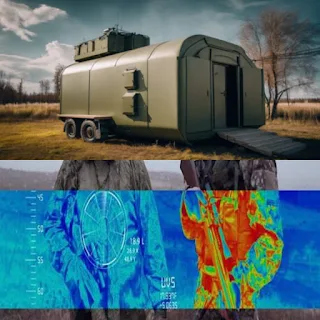Experts from the All-Russian Research Institute of Civil Defense and Emergency Situations of the Ministry of Emergencies have created a mobile shelter to protect against light radiation resulting from a nuclear explosion, and from radioactive contamination of the area.
The statement of the institute’s information office published on its website indicates that “scientists of the All-Russian Institute for Research on Civil Defense Problems and Emergency Situations have created the modular civil defense shelter “KUB-M”, which is completely ready at the factory.”
This mobile shelter contains two units: protected rooms that can accommodate 54 people and a technical unit. The shelter capacity can be increased by installing additional units. The main advantage of the KUB-M shelter compared to other civil defense structures is its mobility and mobility. If necessary, it can be transported by road or rail to a new location and connected to existing public utility networks.
According to the innovators, this shelter provides 48-hour protection from striking air waves and light radiation resulting from the nuclear explosion, radioactive contamination of the area, as well as explosions and fragments of conventional weapons, falling parts of damaged buildings, chemicals, and fires.
Experts point out that the production, transportation and installation of “KUB-M” is more than two times cheaper than building a fixed protective shelter, and the period of its production and installation does not exceed three months.
Russian students test materials to protect people and devices from detection by thermal imagers
Students of Perm National Research and Technology University proposed a component on the basis of which a material could be created that protects people and devices from being detected by thermal imagers.
The university's media office indicates that the thermally expanded graphite present in the basis of this component will also help reduce the effect of interference in electronic devices.
Thermally expanded graphite is a highly porous powder used in mechanical engineering and petrochemical industries. Students at the university's School of Aerospace have proposed using its ability to scatter infrared rays to protect people and devices from detection using thermal imagers.
According to student Andrei Myakshin, graphite-based materials can be spread on the surface of fabrics from which clothes and covers of devices and equipment are made.
He says: “We tested the material using thermal imagers, and the images clearly showed its effectiveness. Therefore, fabrics coated with a protective mixture are able to dissipate heat and protect against electromagnetic radiation. The thickness of the fabric layer is only 0.5 mm.”
Dr. Lyudmila Khimenko, who is supervising this study, points out that heat-insulating materials are currently being used, including expensive materials whose effectiveness has not been confirmed, for infrared camouflage. The proposed material can be easily obtained from available materials.


Great
ReplyDelete